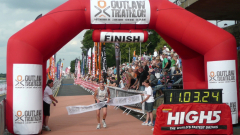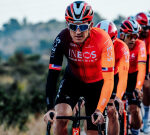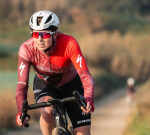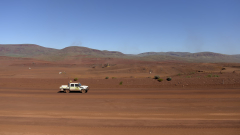Outlaw Triathlon events have become a staple on the UK racing calendar. Starting off as just one full distance event in its home of Nottingham, Outlaw now has three jam-packed multisport event weekends over the triathlon race season.
Back in September 2024, we caught up with founder Iain Hamilton to get his reaction after IRONMAN announced their new UK full distance race, IRONMAN Leeds, set to take place on the same weekend as Outlaw Nottingham full. And while Hamilton was honest about his concerns, he was also heartened by the reaction of the triathlon community – telling TRI247: “By the end of the day, I found myself smiling again, reading so many positive comments about Outlaw. People were talking about how much they love our athlete-focused approach…”
As Outlaw celebrates 15 years of swim-bike-run action in 2025, we caught up with ‘the other race director’ Adam Moffat, who oversees much of the crucial operational side of the events. To find out more about what makes Outlaw so special – and how the triathlon community inspire the team to keep going.
“We designed an event we wanted to do, that bit was simple.” How Outlaw started
It’s hard to imagine a time when UK-based athletes’ Instagram feeds weren’t flooded with orange carpet finisher photos each summer. But how did Outlaw come into existence? “We’d been organizing events since 1991 and noticed the growing popularity of long-distance triathlons in the UK. Back then, the options were limited, and the quality of events often left a lot to be desired,” Adam explains.
“In 2009, we conducted a feasibility study, visiting events like Challenge Roth and others to learn from the best. This inspired us to create the Outlaw, and our first event took place in August 2010.”
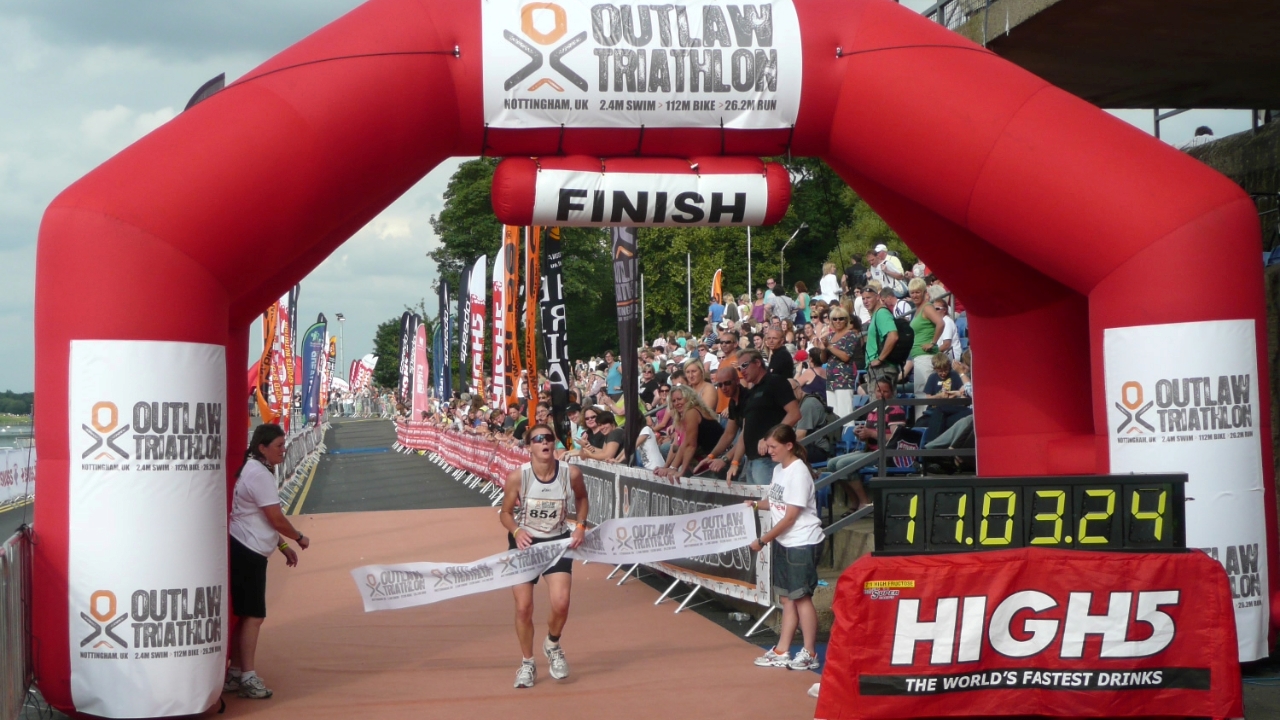
“From the start, we prioritized making the event spectator-friendly… We also collaborated with local triathlon clubs because they truly understand the needs of athletes, whether it’s manning feed stations, transitions, or other key areas. We designed an event that we wanted to do, that bit was simple.”
Why ‘Outlaw’?
“Initially, we only envisioned one event, not the series it has become. The name “Outlaw” tied into our Nottingham roots, with its connection to Robin Hood and Sherwood Forest. It also reflected our independent spirit, as we weren’t part of the Ironman brand.”

Flash floods and a Jaffa cake shortage – overcoming challenges and learning on the go
While Outlaw, from a participant perspective, is a finely oiled machine. For those working behind the scenes it’s not always been plain sailing. “Looking back at 2010, we had no idea what we were doing in some areas,” Adam reflects.
“For example, we didn’t fully consider the importance of timing, that it is within reason a full 24 hour event —like ensuring transition areas were well-lit before, during, and after the race.”
“And we underestimated how much athletes would consume things like crisps and Jaffa Cakes – in the first year, those didn’t last long! We are very proud that we’ve never ran out of water at an Outlaw, following each event, we calculate how much water, High5, coke each person has drank, it’s not very glamorous, but neither is running out of nutrition for the athletes.”
“Over the years, we’ve had flash floods which caused to us cancel the bike, toxic water so we changed the event format the day before, gale force winds so no disc wheels allowed, and major heat wave with athletes racing in 30’+ – which isn’t normal in the UK.”
“The ethos remains the same” – How it’s going, 15 years later
From one full distance race, to three full Outlaw weekends across two locations (Holkham and Nottingham), with a suite of middle distance, short course and Aquabike racing. There’s been plenty of changes and innovation over the years as Outlaw has grown with the times. But somethings will always stay the same, Adam highlights.

“There are so many changes now… Our full time staff team has now grown, but we are committed to staying available and front of house. Most of our staff are the same as when we originally started The Outlaw. The operational team has increased but is still lead by myself & Steve Paley.”
“Athletes are much faster now. It took years to break the nine-hour barrier, but we’re now seeing times closer to eight hours.”
“To support a broader range of athletes, we’ve adjusted cut off times, particularly for the swim and bike, while balancing these chan

